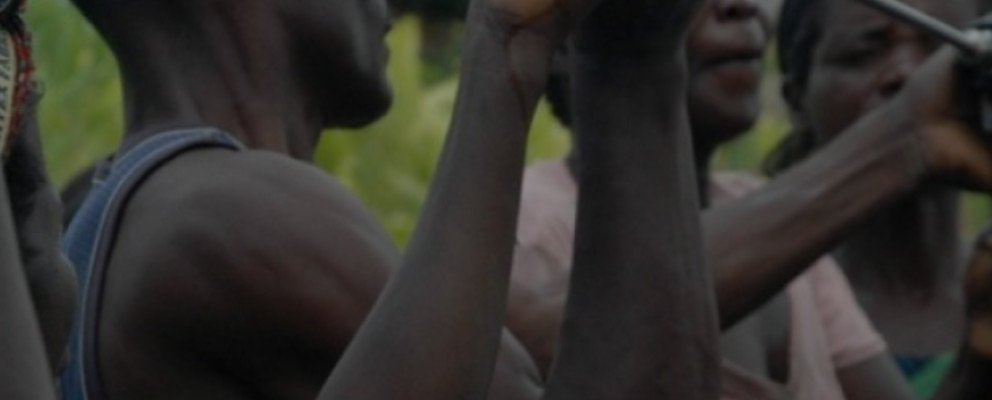
#BeAdVENTUROUS, Minister Champagne!
In January 2018, Canada will launch its Development Finance Institution (DFI), which will invest $300 million in social enterprises to reduce poverty and drive economic growth. This is great news! EWB campaigned hard for the DFI and we’re glad to see it set up.
Why, oh why, focus on a DFI?
Two years ago, global leaders adopted the Sustainable Development Goals, an ambitious set of 17 goals and 169 targets, that seek to “end poverty, protect the planet and ensure prosperity for all.” It is estimated that achieving this will cost 3.5 to 5 trillion dollars per year.
That’s a big price tag !
To give you some perspective, if you add up all the current military spending by all the countries in the world, the total is still less than $1.7 trillion per year. In contrast, according to the OECD-DAC, all the official development assistance (ODA) from all donor countries in the world amounts to $143 billion.
If all donor countries met their long standing commitment to allocate 0.7% of GNI (which they absolutely should!) that would bring us to $313.5 billion. This would be a huge step forward, but still insufficient to meet the world’s priorities for sustainable development.
That’s why the world is looking at other (and bigger) pots of money and innovative ways to finance development. DFIs are a key part of this. A single dollar invested by a DFI can unlock 5 to 12 additional dollars in private investment.
With the launch of the new DFI, Canada will finally join the Netherlands, Germany, France and other countries who make financial investments to achieve development impact and encourage private investors to do the same.
Setting up Canada’s DFI is just the beginning, not the final frontier!
Now that Canada has included the DFI in the federal budget, we can’t pat ourselves on the back, and move on to the next thing. We need to make sure the DFI actually does its job. While there are many expectations for Canada’s DFI, commentators agree that the top priority is to define its mandate and focus to make sure it complements, rather than substitutes, private investment and official development assistance (ODA).
Canada’s DFI should invest in businesses, sectors and countries that the private sector is unable or unwilling to, because it may be considered too risky (they need to boldly go where no private institutional investor has gone before!).
That’s what our #BeAdVENTUROUS campaign is about. At EWB, we feel it would be a lost opportunity if Canada’s DFI invested in businesses, sectors and countries that already receive a lot of investment, either from private lenders or other DFIs.
What’s risk got to do with it?
Concretely, that could mean focusing on the least developed countries (LDCs), a group of 47 of the world’s poorest countries that receive extremely low and fluctuating foreign direct investment: less than 1 per cent of the world’s private investment and less than 25 per cent of investments from other DFIs.
It would also mean focusing on social sectors such as health, education, water and sanitation, which receive a small fraction of investments, probably because they don’t promise the immediate revenues of other (safer) sectors, such as banking and financial services, natural resources, energy or manufacturing. These receive more than half of all DFI funding.
It also means supporting early-stage ventures (being ad-VENTURE-ous!), like the World Bank is in India (but not in the least developed countries), and being the first ones to invest in an entrepreneur with a great idea before she secures millions in funding from other investors.
These are the voyages of Starship (Social) Enterprise
If the DFI is to carry out its mission, it must invest in businesses led by young women entrepreneurs.
Women usually don’t own a lot of assets, so when they try to get loans to start businesses, they are considered too risky to lend to, and shut out of credit markets.
Women also don’t usually have the capital they need to set up businesses in sectors such as financial services or information-technology. In such sectors, it’s easy to monitor revenue, expand quickly and generate profits.
As a result, they’re pushed into sectors such as retail or services, where profit margins are lower, opportunities for growth are more limited, and the risk of failure is higher.
It’s no surprise that these aren’t as attractiveness to private investors. But that’s exactly where the Canadian DFI should go.
#BeAdVENTUROUS Minister Champagne!!!
All this requires a (Captain Kirk-esque) willingness to be bold and embrace risks.
We are calling on the Minister of International Trade, the Honourable François-Philippe Champagne, who oversees the DFI, to rise to the challenge. We’re asking him to make a commitment that Canada’s DFI will support high-risk, early-stage ventures in businesses, sectors and countries that need it the most.
We’re asking Minister Champagne to #BeAdVENTUROUS!
Join us on Twitter on October 26 at 3pm EST to make your voice heard using #ChampagneParty!
Prateek Awasthi (@prateekawasthi) is the Director of Policy and Advocacy at EWB Canada.
